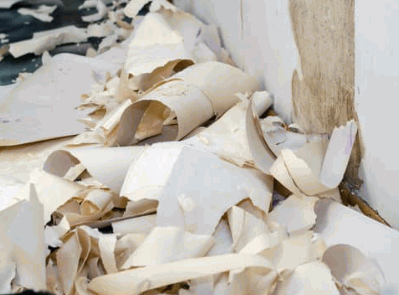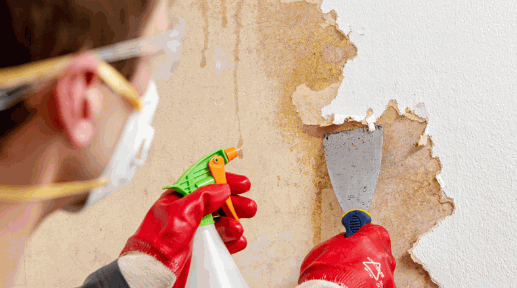Table of Contents
Mould can be a persistent and unsightly issue, particularly when it establishes itself on wallpaper, thriving in damp and poorly ventilated environments. This article aims to provide a comprehensive understanding of mould, including the factors that contribute to its growth, methods for identification, and the potential risks it presents. Additionally, this guide will introduce products such as Dettol, HG Mould Remover, Dryzone, and Zinsser, which are known for their effectiveness in treating mould. We will guide readers through the process of safely removing mould from wallpaper, offer tips for prevention, and discuss circumstances that warrant the involvement of a professional. By the conclusion of this article, readers will be equipped with the knowledge necessary to effectively address mould issues and maintain a safe living environment.
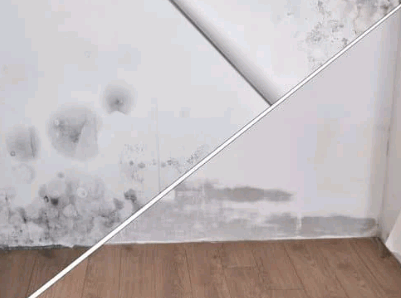
What Is Mould?
Mould is a type of fungus that flourishes in damp and humid environments, commonly found in residential settings, particularly behind walls and in kitchens and bathrooms. Mould can manifest in various colours, including black, and has the potential to cause significant structural damage to properties if not addressed promptly. In particular, Victorian terraces and Edwardian cottages are often more susceptible to these issues due to their age and common presence of damp.
It is imperative to understand the conditions that foster mould growth, such as elevated humidity levels and inadequate ventilation, to effectively manage and prevent its proliferation. Knowledge of mould development and its effects on health and property is essential for homeowners.
Check this out: How To Remove Mould From Sofa
What Causes Mould To Grow?
Mould growth is typically the result of a combination of high humidity, moisture, and inadequate ventilation, creating an environment that is conducive to fungal development.
As this issue progresses, it becomes increasingly noticeable, particularly in areas of the home that are more susceptible to dampness, such as basements, bathrooms, and kitchens. Homeowners in older properties, like Victorian terraces and Edwardian cottages, should be particularly vigilant due to common issues with moisture and condensation. High humidity levels can arise from various sources, including leaking pipes, insufficient insulation, and everyday activities such as cooking and showering.
Condensation is a critical factor in this context; it can form on cold surfaces, resulting in dampness that fosters mould growth on wallpaper and other materials. Therefore, it is essential to regularly monitor humidity levels and address potential sources of moisture to mitigate the risk of fungal contamination.
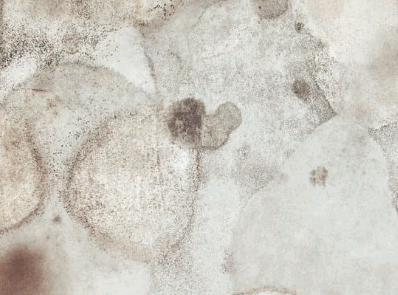
What Are The Signs Of Mould On Wallpaper?
Identifying mould on wallpaper is essential for maintaining a healthy living environment, as early detection can prevent more extensive damage and associated health risks. Look for common signs such as stains or discolouration, which homeowners can find in resources.
Signs of mould growth typically include visible stains or discolouration, especially dark spots that may indicate the presence of black mould, as well as a musty odour that permeates the air. Furthermore, peeling or bubbling wallpaper may signal moisture beneath the surface, suggesting a potential mould issue.
Regular inspections are advisable for homeowners to remain vigilant against this prevalent problem.
How To Identify If Mould Is Dangerous?
Determining the potential danger of mould requires a careful assessment of its type, particularly the differentiation between common varieties and harmful species, such as black mould, which can pose significant health risks.
Identifying harmful mould species is critical for the protection of one’s health. To accurately evaluate whether a specific mould type is hazardous, individuals should examine characteristics such as colour, texture, and growth patterns. Common indicators of harmful mould include a fuzzy or slimy appearance. The health risks associated with exposure to mould can range from respiratory issues and allergic reactions to severe neurological impairments.
Utilising safe cleaning products is imperative when addressing mould problems, as certain widely used solutions may worsen health concerns. For instance, bleach, which is frequently recommended, may fail to effectively eliminate all mould spores and can release harmful fumes. Instead, selecting eco-friendlier alternatives, such as vinegar or hydrogen peroxide, presents a safer option for both users and the environment.
Common harmful mould species to be aware of include:
- Aspergillus
- Stachybotrys chartarum (black mould)
- Penicillium
- Cladosporium
Proactively identifying and addressing harmful mould is essential for maintaining a healthy living environment.
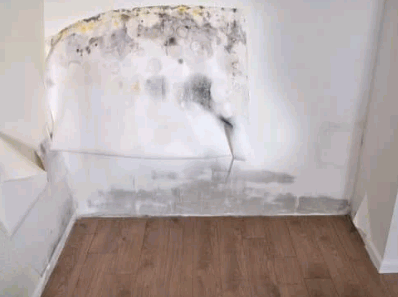
Is it Safe To Remove Mould From Wallpaper?
The removal of mould from wallpaper can be conducted safely, provided that appropriate precautions are taken to ensure both personal safety and effective mould eradication. This process is essential to prevent the spread of spores into the air.
What Precautions Should Be Taken When Removing Mould?
When removing mould from wallpaper, it is imperative to take specific precautions to protect oneself from exposure and to ensure the effectiveness of the cleaning process.
Proper ventilation is among the most critical measures to prevent inhaling harmful spores and fumes. Moreover, consider investing in a dehumidifier from brands like Meaco to maintain optimal indoor humidity levels. Opening windows and doors to facilitate fresh air circulation is essential, and utilising fans can further enhance airflow.
Additionally, wearing appropriate protective gear, such as masks, gloves, and goggles, provides an extra layer of safety during the cleaning procedure.
In terms of cleaning methods, it is important to evaluate the advantages and disadvantages of natural solutions, such as vinegar, compared to traditional chemical products, such as bleach. Vinegar serves as an effective, non-toxic alternative that can eliminate mould spores without releasing harsh chemicals into the environment. However, for more severe infestations, bleach may prove to be more effective but requires careful handling.
To ensure safe and effective cleaning, consider the following guidelines:
- Carefully read product labels to select suitable cleaning agents.
- Test any cleaning solution on a small, inconspicuous area of the wallpaper prior to full application.
- Store cleaning products safely, out of reach of children and pets.
By adhering to these precautions and selecting appropriate cleaning methods, the process of removing mould can be conducted safely and effectively.
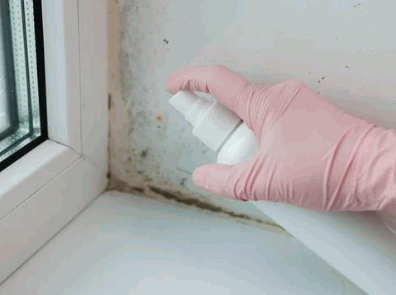
How To Remove Mould From Wallpaper?
Removing mould from wallpaper necessitates a systematic approach to ensure comprehensive cleaning and to prevent future growth. This process involves utilising effective solutions, such as vinegar, along with suitable cleaning tools, including sponges. It is essential to use products resistant to mould growth, like M & V Multi Purpose Wallpaper Adhesive Paste, which can help in maintaining the integrity of your wallpaper.
What Supplies Are Needed For Removing Mould?
To effectively remove mould from wallpaper, several essential supplies are required, including sponges, natural solutions such as vinegar, and potentially stronger agents like bleach for more stubborn stains.
Plus these basic items, the following should also be considered:
- Protective gloves: These are essential for safeguarding the skin from harsh chemicals, particularly when using bleach.
- Face mask: This is useful for preventing the inhalation of mould spores and fumes from strong cleaning agents.
- Bucket: A bucket is necessary for mixing solutions and managing wastewater during the cleaning process.
- Scrubbing brush: This tool provides an effective means of scrubbing the wallpaper surface to ensure complete removal of mould.
- Microfibre cloths: These are ideal for drying the area and preventing any remaining moisture, which could lead to regrowth.
When evaluating cleaning products, it is important to weigh the pros and cons of natural versus chemical products. Natural solutions like vinegar and bicarbonate of soda are less harmful to the environment and are generally safe for indoor use; however, they may not be as effective against severe mould infestations.
Conversely, chemical agents such as bleach can yield quicker results, but they pose potential health risks and environmental concerns that must always be considered prior to use.
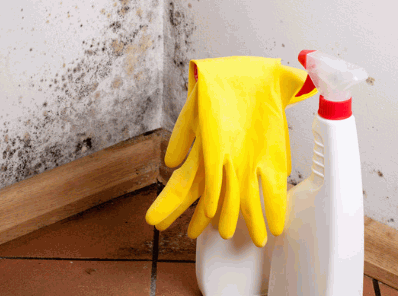
What Steps Should Be Followed For Removing Mould?
To remove mould from wallpaper, it is essential to follow a systematic series of steps to ensure thorough cleaning and minimise health risks associated with mould spores. Understanding the risks of mould exposure is crucial, as it can lead to respiratory issues and allergic reactions. Therefore, approaching this task with care and preparation is of utmost importance.
Begin by donning protective gear, including gloves, a mask, and safety goggles, to protect yourself from harmful spores. Ensure that the room is well-ventilated by opening windows and doors to facilitate fresh air circulation, which aids in containment and reduces moisture levels.
- Preparation: Identify the affected areas and gather the necessary cleaning supplies, which may include white vinegar, bicarbonate of soda, a spray bottle, and a clean cloth.
- Cleaning Methods: Start by spraying the mould with vinegar and allow it to sit for approximately one hour. Wipe the area clean with a damp cloth and repeat the process as necessary.
- Post-Removal Care: After cleaning, ensure that the wallpaper is thoroughly dried to prevent future growth. Consider placing a dehumidifier in the space to maintain an optimal humidity level.
By adhering to these detailed steps, one can effectively eliminate mould from wallpaper while ensuring health safety and maintaining a safe living environment. However, using products like HG Mould Remover or Dettol can be beneficial in this process.

Can Mould On Wallpaper Be Prevented?
Preventing mould on wallpaper can be accomplished through a combination of effective moisture control practices and the implementation of proper ventilation. These measures are essential for regulating humidity levels within the home, especially in properties like a Victorian terrace or an Edwardian cottage.
What Are Some Tips For Preventing Mould?
Implementing a few straightforward strategies can significantly reduce the likelihood of mould growth on wallpaper, thereby ensuring a healthier living environment. Using quality materials like M & V Multi Purpose Wallpaper Adhesive Paste can also help in prevention.
Maintaining appropriate humidity levels is essential for creating an environment that is unfavourable for mould development. It is advisable to aim for humidity levels between 30-50% throughout the home. Investing in a dehumidifier may be beneficial, particularly in areas susceptible to dampness, such as basements and bathrooms.
Additionally, establishing regular cleaning routines can play a vital role in mould prevention. Consider the following practical steps:
- Periodically wipe down surfaces with a mixture of vinegar and water to deter mould spores.
- Ensure adequate air circulation by keeping windows open whenever possible or utilising extractor fans.
- Inspect plumbing and roofing for leaks, as these can significantly contribute to moisture accumulation.
By incorporating these practices into daily routines, individuals can decrease the risk of mould growth and promote a healthier home atmosphere.
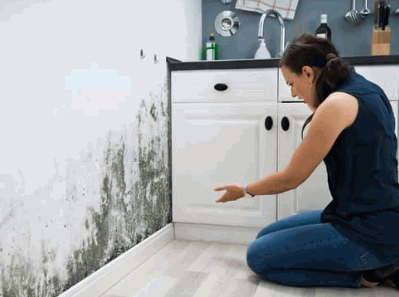
When Should A Professional Be Consulted For Mould Removal?
Consulting a professional for mould removal is strongly recommended in cases where the infestation is extensive or poses significant health risks, particularly with hazardous types such as black mould.
Mould growth can be difficult to detect and may often go unnoticed until it has proliferated significantly. Individuals should consider seeking professional assistance under the following circumstances:
- The mould covers a substantial area, typically exceeding 10 square feet.
- Visible signs of mould are accompanied by a musty smell, which may indicate a more serious underlying issue.
- Members of the household experience health symptoms such as respiratory difficulties, allergies, or skin irritations.
If previous attempts to remove mould have proven ineffective or if the affected materials are porous, such as plasterboard or carpets, enlisting the services of trained professionals will ensure safety and thorough remediation.
Professionals typically employ advanced techniques and equipment, which not only facilitate the removal of visible mould but also address underlying moisture issues, thereby preventing recurrence and protecting the health of occupants.
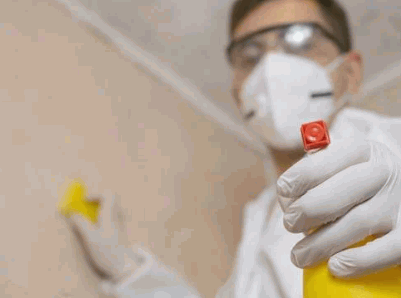
What Are The Risks Of Not Removing Mould From Wallpaper?
Failing to remove mould from wallpaper can pose significant health risks, as exposure to mould spores may lead to various respiratory problems and other health-related issues.
Neglecting mould concerns not only jeopardises health but can also result in considerable property damage. Mould thrives in humid environments and often remains undetected behind walls or in corners, where it can gradually compromise structural materials. Prolonged exposure to mould can lead to complications such as:
- Allergic reactions, including chronic coughing and sneezing.
- Worsening of asthma or other pre-existing conditions.
- Potential neurological issues in severe cases.
If left untreated, mould can proliferate quickly, necessitating more extensive remediation efforts and costly repairs. It is essential to address this issue promptly to protect both health and the integrity of the property.
How To Properly Dispose Of Mouldy Wallpaper?
The proper disposal of mouldy wallpaper is essential for preventing the spread of mould spores and ensuring safe cleaning practices, thereby safeguarding both public health and the environment.
Adhering to safe disposal practices is critical for maintaining a healthy living environment, particularly when addressing the potential hazards associated with mouldy materials. Proper disposal not only minimises the risk of spore dispersal but also helps mitigate potential health issues that may arise from prolonged exposure.
The following guidelines should be implemented to ensure safety throughout the disposal process:
- Preparation: Before handling the wallpaper, it is advisable to wear appropriate protective gear, including gloves, masks, and goggles, to minimise exposure.
- Moistening: Lightly dampening the wallpaper with water can aid in reducing the release of spores into the air during removal.
- Sealing: After removal, the mouldy wallpaper should be tightly sealed in plastic bags to contain any spores before disposal.
- Disposal Method: The sealed bags must be disposed of in accordance with local regulations, preferably by delivering them to a waste management facility that is equipped to handle hazardous materials.
By following these steps, individuals can effectively manage the removal of mouldy wallpaper while protecting their health and contributing to environmental conservation.
